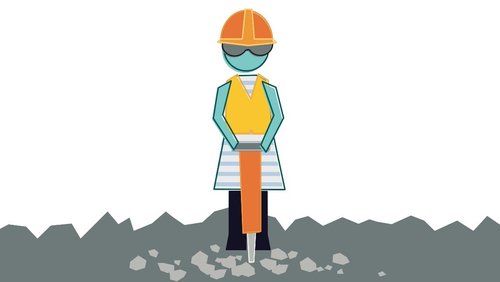
A Methodist Way of Life expands the Methodist Church’s core Our Calling statement, and provides a rhythm to live life. There are 12 practices within the four areas of evangelism, learning and caring, worship and service that will help us mature as disciples, welcome others into the church community, and be part of a missional church together.
But do our churches, circuits and communities have opportunities to visit all 12 stations?
Construction (and demolition)
What construction work is needed so that all 12 stations can be open for travellers?
This might include starting new activities, but it could be about how you communicate what’s already happening in your church. It might involve giving an existing activity more of a spiritual edge, or recommending that people engage with activities in other Christian places.
“At one of the General Church Meetings, I offered a pocket guide to everyone present, and introduced MWoL. We reflected together on the two or three stations which we felt were the church's 'home' stations - those things they felt they were 'good at' collectively as a church. Then we turned to the stations we felt we didn't travel to so intentionally, and I encouraged us to identify two as our focus for the forthcoming year. (This is quite a large church; a smaller congregation might focus on one.) The church has been talking around the edges of being an eco-congregation for some time, and this prompted one person to suggest the 'Flourish' station, and went on to offer to draw together a small team. Another highlighted the 'Tell' station. So these areas will provide a focus for our energy, learning and time during the next year.”
We might also need to pause construction on a station. Maybe we’ve been rebuilding one over and over again, limiting our capacity to consider the other stations.
And maybe some things need demolishing so that there's enough energy for what is really needed, moving forwards.
Activity: During a church meeting, service or small group, invite the church into a discussion about the stations they’d like to explore. You could use badges, postcards or the floor map as a visual aid, as well as our series of service outlines. Ask people whether they feel the church has the infrastructure to help them explore that station. And, if it doesn’t, then think about what you could put in place. Consider how you will pray about these opportunities.
“We’re exploring what it means to pray. Our weekly Lego prayer sessions use the bricks to construct physical prayers, connected to the week’s theme or expressing what’s going on in our hearts and minds. It helps people to express themselves without words, and to focus as we invite God into what’s going on in our lives and in the world.”
For further guidance, explore Four reasons why discipleship pathways are crucial for church growth.
We run events and webinars throughout the year for individuals and church leaders to explore what this means for them, including "Rural and Rooted", a series for rural churches.